In The Rise and Fall of Modern Medicine, James Le Fanu provides a devastating instant visual refutation of Ancel Key’s claim that the consumption of animal fat was responsible for the dramatic rise in the incidence of heart attacks in the twentieth century, involving otherwise healthy-seeming middle-aged men.1
It is immediately evident that the consumption of animal fat remained level, while heart attacks peaked. So whatever the explanation for the rise in heart attacks, it was not due to changes in eating habits which never varied in the relevant regard.
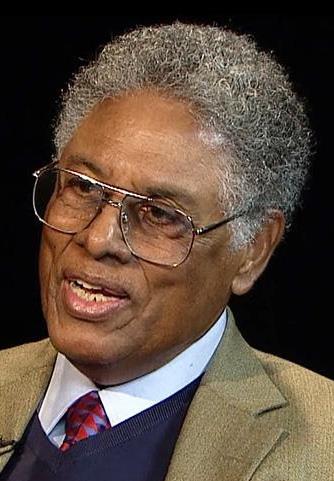
Thomas Sowell, US economist, social theorist and political philosopher.
Similarly, when it comes to race, Thomas Sowell demonstrates quickly and conclusively that a history of enslavement, racial discrimination and poverty are not the cause of black Americans’ educational and employment performance, the disintegration of the black family, unemployment, nor for black crime and imprisonment.2
By the 1890s, blacks living in northern states had overcome the lingering disadvantages that slavery contributed to. As late as 1910 in Chicago, two-thirds of blacks were well-integrated into predominantly white communities,3 and in New York City most worked in modest but respectable jobs such as caterers, barbers, waiters and skilled craftsmen.4 They were better off than recent white immigrants, and black caterers in Philadelphia5 and black businesses in Chicago had majority white clienteles.6
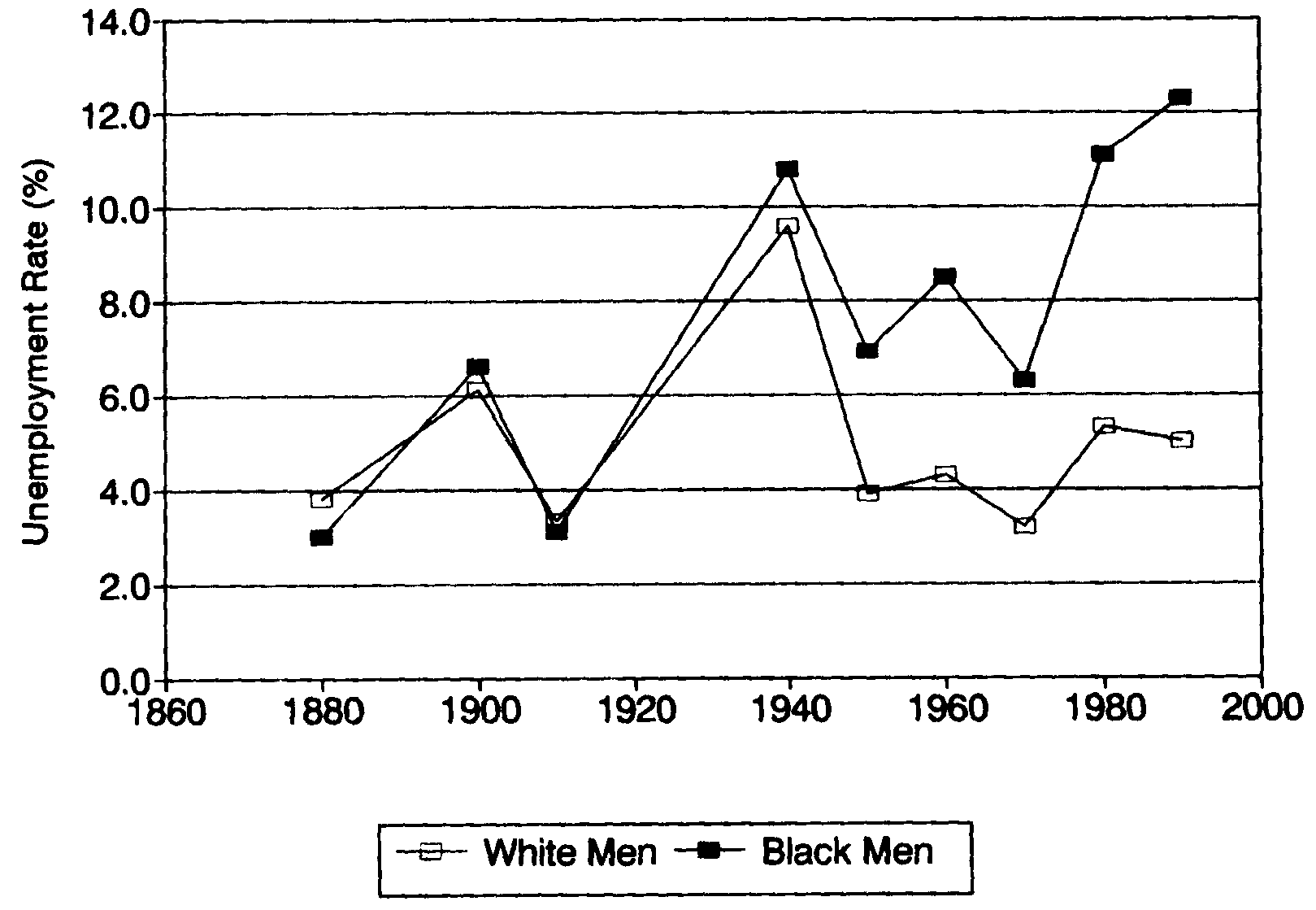
The Racial Unemployment Gap in Long-Run Perspective: Robert W. Fairlie, William A. Sundstrom, The American Economic Review, Vol. 87 Issue 2 (Papers and Proceedings of the Hundred and Fourth Annual Meeting of the American Economic Association) (May, 1997) pp. 306-310. [Click on the image to enlarge in a new tab]
In 1910 black unemployment was slightly lower than whites and marriage rates were slightly higher than whites. [See graph left]
This refutes the notion that high unemployment and single-parent households are the result of slavery and racism. No reasonable person would think that white racism worsened as the twentieth century progressed, and it does not make logical sense to claim that the negative effects of slavery increased the further blacks moved from the time of slavery.
Instead of racism and discrimination, Thomas Sowell identifies large-scale in-migration from Southern blacks to the north starting in the early twentieth century as the root cause of a lot of problems. Southern blacks brought with them illiteracy, unemployment, an increase in out of wedlock births, anti-social behavior and crime. In early 20th century Pennsylvania, for instance, Southern black crime was five times that of Northern-born blacks.7
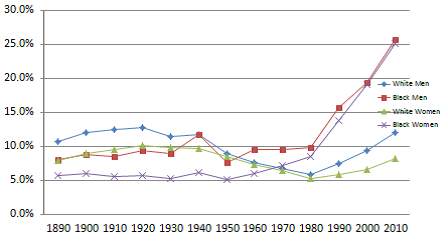
Percent of those never-married among 35 and older by sex and race, 1890 to 2010. SEHSD Working Paper Number 2012-12: Diana B. Elliott, Kristy Krivickas, Matthew W. Brault, Rose M. Kreider (US Census Bureau). [Click on the image to enlarge in a new tab]
Based on this demographic contrast, it could well be argued that the problem was not racial per se, but cultural. Southern culture was more macho than the North and had more negative attitudes towards education. The Southern states were primarily populated by whites from areas in Britain that engaged in counter-productive behaviors and attitudes. Northern states were populated more by culturally more advanced parts of England.8
Misidentifying the causes of the difference between white and black achievement and prosperity means that proposed remedies are likely to be ineffective. Early twentieth century “progressives” were genetic determinists who believed that some races were inherently inferior and as such they subscribed to Social Darwinism and eugenics. Genetic determinism was a fundamentally disempowering idea that meant that underperforming social groups could do nothing to improve their lot. This was replaced in the late twentieth century by progressives, now calling themselves “liberals,” who argued that black/white differences were due to white racism and discrimination. This was again disempowering because it meant that the fate of blacks had to do with what was going on in the minds of white folk.
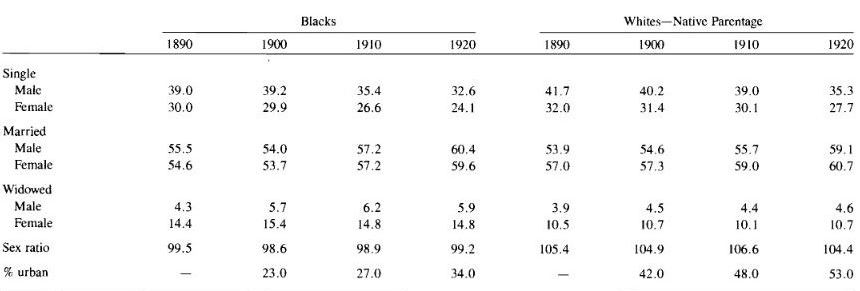
Marital Status of the Population 15 years and Over, 1890 to 1920. Erol Ricketts, “The Origin of Black Female-Headed Families” Focus (Spring/Summer 1989) p. 33. [Click on the image to enlarge in a new tab]
During World War I, Army IQ tests were administered to soldiers. White soldiers from Georgia, Arkansas, Kentucky, and Mississippi scored lower on mental tests than black soldiers from Ohio, Illinois, New York and Pennsylvania.9 Again, this strongly suggests that differences on mental tests were cultural, not racial in origin.
When Southern blacks started moving into Northern states in the early twentieth century in very large numbers, Northern blacks were concerned that their hard-won achievements would be undermined. They were correct. The Southerners were much more prone to criminal and anti-social behavior and the white Northerners fled from the areas into which the black Southerners moved, reversing the long process of residential racial integration. Northern blacks shared the skin color of the Southern in-migrants and suffered by association. An advertisement addressed to the black Southern newcomers in The Chicago Defender, a black-owned newspaper, in combination with the Urban League, provides evidence of the worry many Northern blacks felt about the situation:
DON’T USE VILE LANGUAGE IN PUBLIC PLACES.
DON’T THROW GARBAGE IN BACKYARD OR ALLEY WAYS OR KEEP DIRTY FRONT YARDS.
DON’T CARRY ON LOUD CONVERSATIONS IN STREET CARS AND PUBLIC PLACES.10
Something similar happened when Eastern European Jewish immigrants started arriving. The culturally assimilated German Jews were horrified at the new immigrants’ behavior and actively sought to improve their acculturation. Irish immigrants also tended to be violent, alcoholic, anti-social in their behavior and disease-ridden, introducing cholera into 19th century America where it was previously unknown.11 The Catholic Church took strong steps to counteract these tendencies and actually succeeded over generations.12 Thus, in all these cases, Sowell points out, it is not a matter of “perceptions” or “stereotypes.” We have no reason for disbelieving the first-hand accounts of their neighbors. Other members of the same ethnic groups recognized the problems and took steps to correct them.

James Baldwin (1924-1987), US writer and social critic.
The Northern blacks had succeeded by assimilating the dominant culture around them. However, this did not happen with the new Southern blacks because wave after wave of Southern blacks came North, reinforcing the Southern cultural habits. The majority of blacks living in the North were born in the South as late as 1944.13
In the 1960s, black crime started to skyrocket, unemployment and welfare dependency did too, and the black marriage rates plummeted. Black and white intellectuals blamed white racism. Anti-social behavior like urinating in public housing elevators was defended by intellectuals like James Baldwin, for instance, as a perfectly rational and reasonable response to being perceived negatively by whites.14
As noted previously, this makes no sense because no one can reasonably argue that whites became more racist in the 1960s when compared to the disenfranchised treatment of blacks over the previous century. This was after all the decade of the Civil Rights movement where the black vote was expanded. Prior to the 1960s, black poverty rates had started to go down and continued to edge slowly down while black crime rate went through the roof. Thus the notion that poverty causes crime is likewise untenable in this case.

Historical Poverty Tables: People and Families – 1959 to 2015. Table No. 2. Poverty Status of People by Family Relationship, Race, and Hispanic Origin. [Click on the image to enlarge in a new tab]
Thomas Sowell himself grew up in black Harlem in the 1930s and 1940s. He was very poor and so were his neighbors. But he and they were not criminals and public housing elevators did not stink of urine and anti-social behavior in the public housing estates was not a big problem. In fact, because almost no one had air conditioning, people frequently slept in the open in parks and fire escapes and felt safe doing so. At the time, Harlem was a safe place to be and whites frequented the black clubs in Harlem late at night.
Two things, among others, have contributed to black unemployment. One is the minimum wage. The minimum wage has been used in the US and in other countries explicitly to minimize competition from high performing ethnic groups. White Canadians were worried about Japanese Canadians who worked very hard and for significantly lower wages than white Canadians tended to be prepared to work for. Japanese Canadians were actively discriminated against and were interned far longer than Japanese Americans during World War II, but have done very well economically.15
1930 was the last year that black unemployment was lower than white unemployment and it was also the last year in which there was no federal minimum wage law.16 Black construction workers tended to work for less than their white unionized counterparts and whites felt threatened.17 The Davis-Bacon Act, instituting the first minimum wage, was designed to rectify this. By the late 1940s, inflation had effectively eliminated any meaningful minimum wage and black employment was again high.18
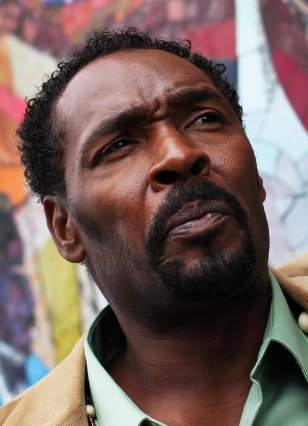
Rodney King (1965-2012), the victim of police brutality and sparked the LA Riots in 1992
Another factor was the massive expansion of welfare in the 1960s. Living on welfare is not attractive to high performing groups like Asian Americans. However, it looks much more attractive if the alternative is low-paying employment. Welfare also means that the government functions as a surrogate wage-earning husband. Any behavior that is subsidized tends to increase. If the government provides a welfare benefit to take care of out-of-wedlock births, then out-of-wedlock births will increase. The big decline of the black two-parent family began in the 1960s.
Black crime in the 1960s also got much worse. This coincides with more lenient sentencing and also with black and white intellectuals excusing criminal and anti-social behavior as only to be expected as a response to poverty and white racism. The majority of blacks, however, actually disapproved of race riots which destroyed black neighborhoods and drove a lot of businesses, black and white, out of those neighborhoods and increased the cost of doing business in lawless, riot-prone areas. A poll in 1967 found 68% of blacks said they had more to lose than gain by rioting.19 Newsweek in 1967 quoted only those who supported the riots.20 Likewise, in the 1990s, 58% of blacks condemned the rioting after the Rodney King verdict. Only 32% found the riots even partially justified. Watts in LA was devastated by rioting and the exodus of businesses. A white academic said the Watts riots were “a legitimate weapon in a morally justified civil war.”21

The infamous image of Reginald Denny, lying beaten on the street by two “Black Power” saluting rioters, LA Riots, 1992. [Click on the image to enlarge in a new tab]
Sowell comments that it is easy to find someone who shares the view of a particular writer, and then falsely to treat that person’s comments as though they were widely representative. Newsweek, for instance, quoted various black youths including one described as “a child of Detroit’s ravaged ghetto.”22 However, at the time, black unemployment in Detroit was 3.4%, lower than whites nationwide. Black home ownership in Detroit was the highest in the nation and the poverty rate among blacks was half that of blacks nationwide.23 It was after the riots in Detroit that Detroit started to fall to pieces, with jobs and taxes leaving with the businesses that left as a result.
Evidence that racism had little if anything to do with all this can be found by comparing the situation among whites in England at the same time. Exactly the same factors can be found among the white working-class in the 1960s.
Whites also urinated in elevators in public housing estates in the 1960s and “anything smashable was smashed.”24 Out-of-wedlock births, an increase in the welfare state, fatherless children and crime also rose dramatically, just as it did among poor blacks in the U.S. at this time. English intellectuals also promoted excuses for anti-social behavior and crime among the members of the white working-class and more lenient sentencing was instituted. In other words, all the features of black problems could be found among whites in England except in the latter case, it is not possible at all to blame race or racism.
Comparing the Economic and Educational Performance of Groups
When dividing people into groups, ethnic or otherwise, it is extremely unlikely that each group will perform the same on intelligence tests, educational outcomes or employment performance. Differences are due to historical, social, cultural, and geographic factors, among others. The difference between Eastern and Western Europeans is bigger economically than between blacks and whites in the U.S.. Since one predominately white population is being compared with another, race or racial discrimination is irrelevant.
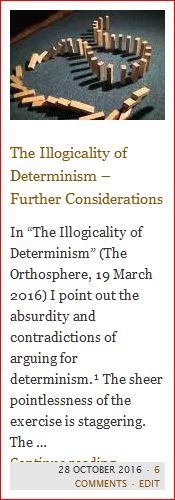 Western Europe had the advantage of being conquered by the Romans. The Romans introduced the Latin alphabet and Western Europeans’ indigenous languages were available in writing before those in the East. There are also more navigable rivers in the West leading to the sea and they are less prone to freezing thanks to the Gulf Stream. England was lucky in that iron ore deposits and coal lay near rivers and could be easily transported by boat – the cheapest form of transporting heavy items. If the deposits were just a mile or two further away, costs would be substantially higher. These factors, along with others, meant that Industrial Revolution took place in England, and not in Hawaii or Eastern Europe.
Western Europe had the advantage of being conquered by the Romans. The Romans introduced the Latin alphabet and Western Europeans’ indigenous languages were available in writing before those in the East. There are also more navigable rivers in the West leading to the sea and they are less prone to freezing thanks to the Gulf Stream. England was lucky in that iron ore deposits and coal lay near rivers and could be easily transported by boat – the cheapest form of transporting heavy items. If the deposits were just a mile or two further away, costs would be substantially higher. These factors, along with others, meant that Industrial Revolution took place in England, and not in Hawaii or Eastern Europe.
Oftentimes, a minority outperforms the majority as is the case with Chinese in Malaysia and Indonesia, Indians in Fiji, Asians in Uganda before they were expelled by Idi Amin, Lebanese in West Africa, Greeks in the Ottoman Empire who owned 50% of businesses employing five or more people in 1912, Belgians in Russia, Spaniards in Chile, Britons in Argentina, ethnic Germans in the Sudetenland region of Czechoslovakia, Jews in Poland, Chinese and Japanese Americans versus white Americans.25 There were 400 engineering degrees awarded to Chinese Malaysians in the 1960s and just four to ethnic Malaysians.26
At one point in time, China was the preeminent civilization. At another, the Europeans were. At other times, Egypt or Babylon were particularly dominant. No race has a monopoly on high achievement and no race is incapable of producing high achieving individuals. Genetic determinism just does not hold water and neither does “racism” to explain poor group performance.
The Chinese are actively despised in Malaysia and are excluded from the public education system. They are expected to pay for their own.27 They are excluded from many occupations and are officially discriminated against. Nonetheless, they continue to outperform native Malaysians. This is due to their cultural habits which include valuing education and hard work.
Privilege
In a report titled “Ethno-Racial Inequality in the City of Toronto,” Japanese Canadians were described as the most “privileged” because they were more successful than the white majority and other minorities, despite horrible anti-Japanese discrimination in Canada.28 The word “privilege” implies something unearned. Since this is clearly not the case, using the word becomes a way of expressing resentment at another group’s success without doing anything to increase your own.
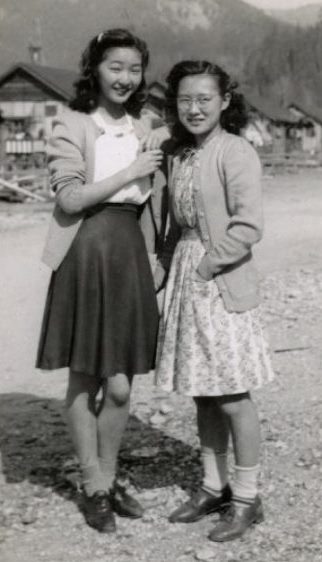
Japanese Canadians suffered explicit structural discrimination during and after the Second World War, but maintained high levels of socio-economic prosperity.
The difference between the well-regarded public high school I attended in Christchurch New Zealand in the late 1970s and early 1980s and the private school is significant here. The private school was expensive, the grounds attractive, and the teachers ordinary, both good and bad. What made the private school educationally different was that every pupil was expected to work his very hardest. As a boarder, television was restricted to perhaps two hours a week. Pupils spent about four hours a day doing homework and studying for exams while most pupils at the public school did the barest minimum amount of work needed to pass or to get a high grade.
The private school boys were on average richer than the children at the public school and the private school had more social prestige, but the differing educational outcomes between the two schools was the result of hard work. To attribute the private school children’s academic success to “privilege” is quite false and misleading. It matters not how good a school is if a student refuses to work. And a student who works very hard can achieve great things at an institution with a mediocre reputation. My parents were two of the best educated, highest performing students in New Zealand. Both came from households with lower middle-class incomes. Their academic success came from sheer hard work.

Prof. Daniel T. Willingham, Department of Psychology, University of Virginia.
Daniel T. Willingham observes that academic performance is boosted in schools where the majority of students have good attitudes and hurt where the reverse is true. This matters more than family background. Class size and money matter far less. If there is a correlation between high academic performance and money, it is that children from successful families are more likely to have adopted habits and attitudes that serve them well. When students from this background make up the majority of a school, then this is a recipe for success. When black or white students who might have been performing below their intellectual abilities are enrolled in such a school, their academic performance is likely to be boosted by imitating the behavior of the pupils around them.
Recent Chinese immigrants are currently outperforming native-born whites in New Zealand. Seventy percent of medical students are now female Asians – with medicine enjoying particularly high social prestige. A NZ relative of mine complained that a Chinese boy practiced the piano for three hours a day, supervised by his mother, and that he was devastatingly better than the local white children in the neighborhood. This showed the white children at the talent show, who all came from wealthy homes, in a poor light. There are three possible responses to this. One is to feel resentful and annoyed at someone who has raised the bar to this degree. Another is to spend three hours a night supervising one’s own children’s music practice. Lastly, one can try to admit one’s inferiority in good grace or simply admire the achievement of the Chinese boy – even dressed in a tailcoat and white bow tie as he was.
The Remedy
The remedy to being outperformed educationally and economically is to adopt the behaviors and attitudes of the high-performing group. Sowell mentions Scotland and Japan as countries that explicitly looked at English and European culture to improve their performance. David Hume argued that Scots should learn English in order to compete economically with the English. Within a century or two, the Scots were leading the world in engineering, ship construction and medicine. The Japanese in turn, when they were looking to improve, imported so many Scottish engineers to Japan that many Presbyterian churches were opened in Japan.
With regard to black Americans, the remedy for their problems is to adopt the behavior and attitudes of the more successful culture and to forego counterproductive habits. Unfortunately, identity politics encourages group solidarity – where anti-social behaviors and individuals are defended against the white “establishment.” Defending rioters, vandals and criminals hurts the group because they raise the cost of doing business and goods in the neighborhood and because their victims are most often black. Black and white intellectuals falsely blame white racism for black performance which encourages a sense of helplessness and fosters resentment.

David Hume (1711-1776)
This is not an argument for the proposition that racism and discrimination does not exist, but these are not correlated with the ups and downs of black achievement. Similarly, Malaysians actively tend to hate Chinese Malaysians who continue to outperform them regardless.
Chinese Americans with an IQ of 100, perform educationally and jobwise as well as whites with an IQ of 120. Japanese Americans with an IQ of 100 perform as well or better than whites with an IQ of 110.29 Eastern European Jews when they first came to the U.S., had low measured average IQs just as black Americans do now. They knew very little English and their behavior tended to be uncultivated. Jews sat in the same classroom as Italian immigrants, lived in the same poor neighborhoods and their parents did much the same kinds of jobs.30 However, even uneducated Jews still valued education, while southern Italians had rioted and burned down school houses in Italy when compulsory education was introduced. Within forty years of arriving, Eastern European Jews were outperforming the non-Jewish white population.
Chinese Americans get mortgages at twice the rate of whites who get mortgages at twice the rate of blacks. Blacks are the first to get fired, followed by whites, followed by Asians.31 White Americans have no particular love for Chinese or Asian Americans – they are simply being outcompeted. There is no positive discrimination for Asians. Asians are not “privileged.” Many Asians head towards the hard sciences as career options and the associated jobs, as everyone knows, tend to be well-paid.
What Not to Do
One of the worst things that can happen to a group that sees that it is not doing as well as another group is to foster a sense of injustice and resentment at that other group and blame them for their troubles. Czechs resented the fact that their cities were founded and populated primarily by ethnic Germans and Jews, while the countryside was predominantly Czech. In order to succeed, it was necessary for Czechs to learn German and to adopt German customs and work habits. This they resented. After World War II, Germans were expelled from Sudetenland and many of their former farms and towns still lie abandoned.32 The Czechs hurt themselves economically by getting rid of their highest economic performers.
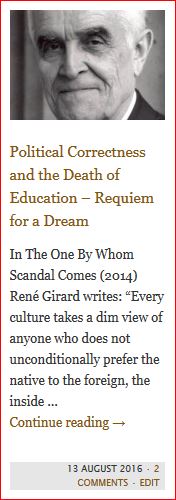 Economics is not a zero-sum game where high performance by one group is at the expense of another. In fact, the lower performing group often benefits economically from the success of the others.
Economics is not a zero-sum game where high performance by one group is at the expense of another. In fact, the lower performing group often benefits economically from the success of the others.
Most countries where the majority is being outperformed by an ethnic minority resort to identity politics and resentment, instead of taking a leaf out of the minority’s book. Intellectuals typically take the lead in this counterproductive behavior. Often they are the first generation university graduates specializing in what Sowell calls “soft” subjects like sociology or political science and they commonly call for positive discrimination to favor the majority culture.
It is not reasonable to expect different results when engaging in the same behavior. If Germans outperform Czechs, or Chinese minorities outperform Malaysians, then the worse performing culture must change by imitating Germans and Chinese. In the process, they may feel they are becoming less Czech or less Malaysian but it is the only rational remedy.
When black Americans physically attack and ostracize black classmates who study “too hard” or take academic work too seriously and say they are “acting white,” then this is counterproductive. High IQ blacks describe their childhoods as “extremely unhappy” more often than other blacks.33 White working class youths in England do the same thing to their classmates who try to work hard at school.
What is commonly thought of as “black culture” in the U.S., is really macho Southern culture that Southern whites participated in. Even some of the words, like “chitlins” can be traced back to England – the part associated with poor work habits and attitudes.
Affirmative Action
Affirmative action is counterproductive. It is called “positive discrimination” in other countries when it is used to “defend” the majority against a high performing minority. It is typically promoted as a temporary solution, but in fact, it tends instead to spread wider and wider and is almost never suspended.
There is evidence that students tend to perform best in the company of their intellectual peers. Blacks admitted to MIT are in the top ten percent of the population for math and science. However, at MIT, they are in the bottom ten percent of the MIT population.34 This has a negative effect on graduation rates, with 25% failing to graduate. The same thing applies to law schools. Student performance is boosted when they are well-matched with the level of the school.
Smart black students perform best when surrounded by other high performing students. Given negative attitudes towards education in the black subculture, smart black students tend to do worse when there are other black students in the class. Therefore, one justification for affirmative action, to provide positive role models for the underperforming group, or a “critical mass,” is not true.
 When the University of California abandoned affirmative action, black enrollment at the two top schools, Berkeley and UCLA, went down.35 But black and Hispanic enrollment went up at the other UC schools and most importantly, graduation rates improved, including an increase in the number graduating in four years, 55%. The number of doctorates attained in the sciences went up substantially, by 25% “after preferential admissions policies were banned.”36
When the University of California abandoned affirmative action, black enrollment at the two top schools, Berkeley and UCLA, went down.35 But black and Hispanic enrollment went up at the other UC schools and most importantly, graduation rates improved, including an increase in the number graduating in four years, 55%. The number of doctorates attained in the sciences went up substantially, by 25% “after preferential admissions policies were banned.”36
When the top schools take minority students who are well-below the academic level of the rest of the student body, they do those students no favors. They tend to fail and to not graduate. Even worse, there is a flow-on effect. The first tier schools take students who should be at second tier schools. They flunk in large numbers. The second tier schools must now take students who belong at third tier schools to make up their numbers who now disproportionately fail, and so on.37
Black students at Harvard do not even typically come from disadvantaged black families. Most black students at Harvard are actually West Indians or Africans or their children.38 All too often, even if the students are native-born blacks who are not the descendants of West Indians or Africans, they come from wealthy middle-class families and are the children of doctors, lawyers and other professionals who are in no need of financial or educational assistance. It is similar with positive discrimination for Malaysians in Malaysia, the children of the highly successful benefit.39
One argument for affirmative action is to put blacks where they would have been if discrimination did not exist. Since discrimination is not the cause, this idea is mistaken. But even if the false premise is accepted for argument’s sake, Sowell argues that rectifying past injustices on present individuals is immoral.40 It treats concrete individuals who in some cases were not even born when these injustices occurred and discriminates against them. The white liberal beneficiaries of these supposed injustices are frequently already safely ensconced in high paying jobs or are retired while they sanction discrimination against young white and Asian men who have not benefited, even in theory, from the supposed discrimination. This treats concrete individuals as mere abstractions. Affirmative action does not make moral sense even if the falsehoods justifying it are accepted.
Social Justice?
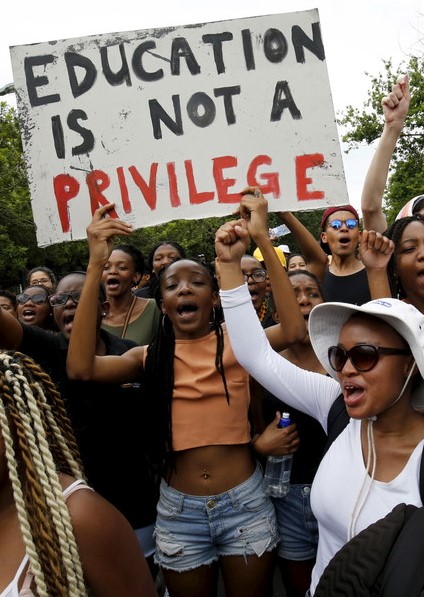
Typical “social justice” protesters in the US, Obama era.
Sowell points out that “social justice” is really “cosmic justice” and cosmic justice does not exist. It is not cosmically just to be born in Eastern Europe instead of Western Europe, or to be raised in a culture that does not value education and engages in counterproductive behaviors. Real social justice is based on merit. It does not involve promoting one individual over another individual based on race or sex. It is not someone’s fault if his parents are illiterate or hate education. But neither can “society” be blamed.
Someone might complain that to say that a group must adopt better cultural habits; that they should imitate more successful groups, is “blaming the victim.” However, this is to beg the question. It assumes that poor educational and economic performance is inevitably the result of discrimination. This just doesn’t wash when minorities outperform majorities in New Zealand, Uganda, Malaysia, Fiji, Czechoslovakia, Indonesia, the Ottoman Empire, Russia, Argentina, Chile, etc..
Black American performance in many regards got worse when racism either lessened or remained the same. Racism doesn’t tally with the facts.
Equality of Outcome
Intellectuals in the twentieth and twenty-first centuries have asserted a false dichotomy, which is that poor group performance is to be explained either by genetic inheritance or by discrimination. Genetic determinism is out of fashion, so that leaves discrimination as the only viable alternative. This ignores historical, geographic, social and cultural factors. Congress has even passed a law shifting the burden of proof onto an employer that he is not engaging in racist hiring and promotion practices.41 This involves a well-recognized logical fallacy. It is almost impossible to prove that someone has not done something; that for instance, a person is not having a secret affair, or that someone has never murdered anyone. This wisdom is summarized by the expression “you can’t prove a negative.” That is the reason for the presumption of innocence normally enforced in the legal system.
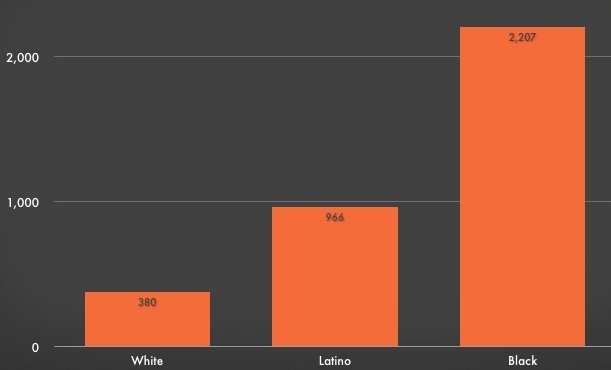
US Incarceration Rates by Race and Ethnicity, 2010. Prison Policy Initiative, Bureau of Justice Statistics, Correctional Populations in the US, 2010 and US Census 2010 Summary File No. 1. [Click on the image to enlarge in a new tab]
Sowell points out that employers and educational institutions do not create inequalities, they merely convey them. Once familiar with world history, there is no reason to think that an institution will mirror the statistical proportions of groups in society. Asians and Jews will be overrepresented in higher education and in well-paying jobs simply because of helpful cultural attitudes. The academic and employment performance of blacks tends to be worse than whites with the same IQs. This is the reason that blacks are unlikely to be 12% of CEOs despite being 12% of the population.
We have gone from equality of opportunity to equality of result and it makes no sense. When it is reported on the news that black children are disciplined, suspended and expelled more than white children at school, the unstated assumption is that teachers and schools are racist. That is an empirical claim in need of empirical support. But as Sowell says, such empirical evidence for discrimination is neither asked for nor given.
We know that blacks are far more likely to commit crimes than whites.
It stands to reason that this antisocial behavior would be in evidence at school. It is not plausible that children who are going to grow up to be criminals, violent and otherwise, would have been model school children – diligent, disciplined and well-behaved. That seems like something a ten year old could anticipate and understand.
What is Retarding Black Progress?
What is stalling black progress is counterproductive cultural attitudes towards work and education, a welfare system that makes life on the dole an attractive alternative to work and obviates the need for a wage-earning father, and intellectuals who excuse criminal behavior as entirely justified by white racism. The poverty rate among black husband-wife families was below 10% in 1994.42 What is especially egregious about these excuses is that blacks are overwhelmingly the victims of black criminals. The intellectual pays no price for being wrong, but the black community he supposedly cares about does.

Prof. Jordan Bernt Peterson, clinical psychologist, University of Toronto.
Sowell also lays some of the blame on the race industry, with “community organizers” playing a prominent role. Identity politics is played up and a massive resentment at whites and other ethnic groups is generated and even cultivated.
Community organizers, contributing to the Black Lives Matter movement among other things, would lose their political influence and jobs if the race war ceased, if the government could not buy votes from resentful blacks and claim to “be on your side,” if the politics of resentment were abandoned. Sowell likens the impoverishment and servitude of blacks created by welfare and the subsequent dependency on the government to a reinstatement of slavery; slaves kept helpless and dependent as a pet voting block.
Jordan Peterson of the University of Toronto has developed a nine point list43 that could serve as a guide for community organizers:
-
- Note a distribution of success.
- Identify winners and losers.
- Claim that the losers are losing only because they are oppressed by the winners.
- Claim allegiance with the losers.
- Feel secure in your comprehensive explanation of the world.
- Revel in your moral superiority.
- Target your resentment toward your newly discovered enemies.
- Repeat. Forever. Everywhere.
Most of all, as Sowell says, intellectuals could not claim to be on the side of the angels, if the solution to black underperformance was for blacks to adopt different attitudes and behaviors. If economic and educational success is independent of racism and discrimination as the Chinese example proves in Malaysia at least, then intellectuals cannot claim to be helping the underdog by promoting racial hatred and resentment.
On a podcast, a black immigrant to the US described how she was introduced to identity politics at high school. She came home to tell her African father that the system was stacked against black success and that there was no point in making an effort. He looked at her and said the equivalent of “to hell with that” and took himself off to medical school and became a doctor.
Nearly everyone recognizes that affirmative action puts a question mark over the career of every member of underperforming groups. Is the person there because he deserves to be, or was she unjustly promoted at the expense of a white, Asian, Jewish American or male? In some cases it actually means artificially inflating grades just to meet quotas, jeopardizing future patients and clients.
Sowell argues that identity politics and the fallacy of blaming racism for black performance, locks blacks into their social position, much as a caste system does. It is entirely unhelpful to be told that the solution is outside your control and in the minds of white people, something no black person has any control over.
Differences of achievement between groups is the norm. They are not something anomalous. The route to more success is the slow, painful process of imitating a more successful groups’ behavior and values – sometimes even learning another language. Japan and Scotland showed that this is possible. Which group is successful and which group not changes over time. At one point, Northern Europeans compared unfavorably with those closer to the Roman Empire, at another time, Scandanavians outperformed Greeks. Change is possible and does occur, but simply resenting another groups’ success and trying to compete with them without changing your own behavior does not work.
 – Adj. Prof. Richard Cocks teaches philosophy at SUNY Oswego. Originally from Christchurch, New Zealand, he is presently based in the United States. Dr. Cocks is an editor and regular contributor at the Orthosphere and has been published at The Brussels Journal, People of Shambhala, The John William Pope Center for Higher Educational Policy and the University Bookman.
– Adj. Prof. Richard Cocks teaches philosophy at SUNY Oswego. Originally from Christchurch, New Zealand, he is presently based in the United States. Dr. Cocks is an editor and regular contributor at the Orthosphere and has been published at The Brussels Journal, People of Shambhala, The John William Pope Center for Higher Educational Policy and the University Bookman.
Endnotes:
- James Le Fanu, The Rise and Fall of Modern Medicine (Abacus, 2011).
- Thomas Sowell, Intellectuals and Race (Basic Books, 2013).
- St. Clair Drake and Horace R. Cayton, Black Metropolis – A Study of Negro Life in a Northern City Vol. I (Chicago University Press, 2015 [1945]) p. 176n.
- Oscar Handlin, The Newcomers: Negroes and Puerto Ricans in a Changing Metropolis (Anchor Books, 1962) p. 46.
- W. E. B. Du Bois, The Philadelphia Negro (University of Pennsylvania Press, 1899). Sowell cites pp. 33-36, 119-121 from his edition.
- Clair Drake and Horace R. Cayton, Black Metropolis, op. cit. p. 176n.
- Franklin Frazier, The Negro in the United States (rev. ed.) (Macmillan, 1949) p. 643.
- David Hackett Fischer, Albion’s Seed: Four British Folkways in America (Oxford University Press, 1989) pp. 31-36 et seq. Grady McWhiney, Cracker Culture: Celtic Ways in the Old South (University of Alabama Press, 1988) pp. 16-18.
- Otto Klineberg, Race Differences (Harper & Brothers, 1935) pp. 183-184.
- Isabel Wilkerson, The Warmth of Other Suns (Penguin, 2011) p. 291.
- Oscar Handlin, Boston’s Immigrants (Atheneum, 1970) p. 114.
- Carl Wittke, The Irish in America (Russell & Russell, 1970 [1956]) p. 101.
- Gunnar Myrdal, An American Dilemma – The Negro Problem and Modern Democracy (Harper & Brothers Publishers, 1944) p. 630.
- Thomas Sowell, Intellectuals and Race, op. cit. 91.
- Charles H. Young and Helen R. Y. Reid, The Japanese Canadians (University of Toronto Press, 1938) pp. 9-1049, 53, 58, 76, et seq.
- Thomas Sowell, Intellectuals and Race, op. cit. p. 95.
- Walter Williams, Race & Economics: How Much Can Be Blamed on Discrimination? (Hoover Institution Press, 2011) p. 42.
- Grant Phillips, “US History Shows the Minimum Wage Has Harmed the Black Community” PanAmPost – News and Analysis in the Americas (28 March 2016 @ 12:44PM) <panampost.com> (accessed 17 July 2017).
- Louis Harris, “U.S. Riots: Negroes, Whites Offer Views,” Los Angeles Times, August 14, 1967, p. A5.
- Under the headline: “The Hard-Core Ghetto Mood”.
- “The Hard-Core Ghetto Mood”, Newsweek (21 August 1967) pp. 20, 21.
- Ibid., p. 20.
- Stephan Thernstrom and Abigail Thernstrom, America in Black and White: One Nation, Indivisible (Simon and Schuster, 1997) p. 162.
- Theodore Dalrymple, Life at the Bottom: The Worldview That Makes the Underclass (Ivan R. Dee, 2001) p. 150.
- Thomas Sowell, Intellectuals and Race, op. cit. p. 7.
- Mohammed Suffian bin Hashim, “Problems and Issues of Higher Education Development in Malaysia” Development of Higher Education in Southeast Asia: Problems and Issues, Yip Yat Hoong (ed.) (Regional Institute of Higher Education and Development, 1973) pp. 70-71 and in particular Table 8.
- Thomas Sowell, Black Rednecks and White Liberals (Encounter Books, 2005) p. 251.
- Charles H. Young and Helen R. Y. Reid, The Japanese Canadians, op. cit. pp. 9-10, 49, 53, 58, 76, et seq.
- James R. Flynn, Asian Americans: Achievement Beyond IQ (Lawrence Erlbaum Associates, Publishers, 1991) p. 1.
- Thomas Sowell, Intellectuals and Race, op. cit. p. 79.
- Board of Governors of the Federal Reserve System, Report to the Congress on Credit Scoring and Its Effects on the Availability and Affordability of Credit, submitted to the Congress pursuant to Section 215 of the Fair and Accurate Credit Transactions Act of 2003, August 2007, p. 80.
- Cacilie Rohwedder, “Germans, Czechs are Hobbled by History as Europe Moves toward United Future” Wall Street Journal (25 November 1996) p. A15.
- Edelbert G. Rogers, The Relationship of Certain Measurable Factors in the Personal and Educational Backgrounds of Two Groups of Baltimore Negroes, Identified as Superior and Average in Intelligence as Fourth-Grade Children, to their Educational, Social and Economic Achievement in Adulthood (Unpublished Doctoral Dissertation, New York University, 1956, University Microfilms) p. 50.
- Arthur Hu, “Minorities Need More Support” The Tech Vol. 107 No. 12 (17 March 1987) pp. 4, 6.
- Richard H. Sander and Stuart Taylor, Jr., Mismatch: How Affirmative Action Hurts Students It’s Intended to Help, and Why Universities Won’t Admit It (Basic Books, 2012) pp. 152, 154.
- Ibid., p. 154.
- Thomas Sowell, Intellectuals and Race, op. cit. p. 69.
- Sara Rimer and Karen W. Arenson, “Top Colleges Take More Blacks, but Which Ones?” New York Times (24 June 2004) pp. A1, A18.
- Ozay Mehmet and Yip Yat Hoong, “An Empirical Evaluation of Government Scholarship Policy in Malaysia” Higher Education Vol. 14, No. 2 (April 1985) p. 202.
- Thomas Sowell, Intellectuals and Race, op. cit. p. 104.
- The Civil Rights Act of 1991 (Public Law 102-166 [S. 1745]).
- “Historical Poverty Tables: Table 4” U.S. Bureau of the Census, Current Population Survey, Annual Social and Economic Supplements. (accessed: 29 June 29 2007).
- Pete Vanderzwet, “Behaviour of Scientologists and Liberals Eerily Similar” The American Thinker (blog) (18 February 2017) <americanthinker.com> (accessed 22 June 2017).
Editorial note:
- All caption text is by the Editors, except for source citation in data tables and graphs.
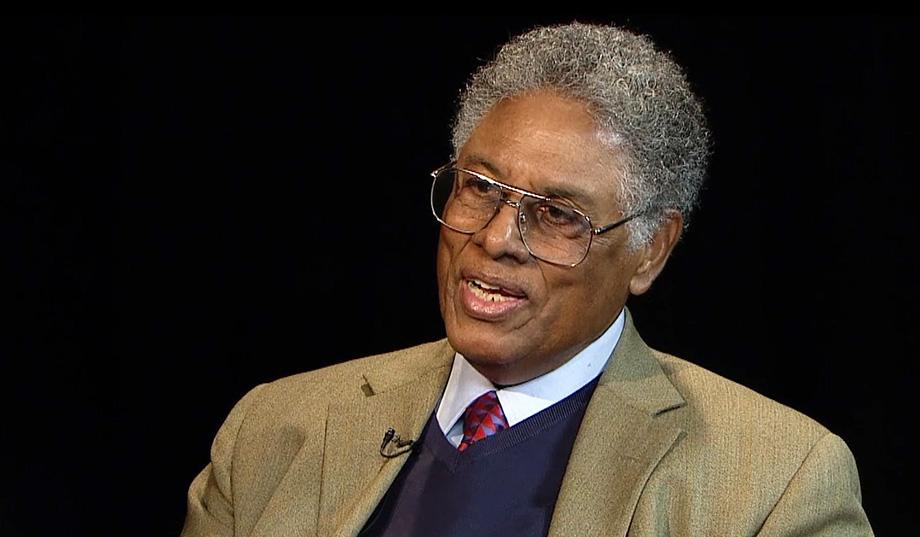




Thomas Sowell is a WASTED TALENT! He could use his intellect to help uplift his people, but out of FEAR he chooses to placate white society and thus aid white supremacy – WHAT A WASTE!
As a matter of policy, we do not authorise Troll comments at SydneyTrads. But this is a good example of an important lesson that mainstream establicons should take to heart, but seldom do: if one’s objective is always an honest appraisal of societal problems without pandering to the idols of contemporary liberalism, no appeal to meritocratic and individualist values will absolve one from the original sin of “white supremacy”.
The article that appears on this page is framed in an analysis that places the cultural above the racial, yet Mr. Williams prefers to respond by firing off a barrage of thought-retarding rhetoric instead of engaging in rational debate. Sowell is allegedly an apologist and ally of “white supremacy” for wanting to better the lot of his people, and illustrating how this betterment is not impossible.
Many in the Dissident Right may disagree with his thesis, as summarised, elaborated and discussed by Richard Cocks here. Many may think this thesis is far too optimistic, that dysgenic trends have gone too far beyond the event horizon for any possible renaissance to be achieved. “There is an obvious commonality between the inhabitants of the Congo, Hait and Detroit” they may say; and the implied point is not entirely invalid, and certainly open for rigorous debate. But our interlocutor goes the other way, denouncing Sowell’s legacy as traitorous for placing the salvation of his people in their own hands as individuals.
The profound nihilism and slave mentality of liberal progressives who thus place Sowell in a metaphorical white hood – even though the focus of his critique is policy, not ethnicity – is both depressing and distasteful. We reject it. These are important issues that deserve the attention of honest people who are not afraid of asking uncomfortable questions. The sophistry of leftist identity politics has no place here.
Spoken like a true WHITE SUPREMACIST
What would motivate Mr. Williams to return to our website eighteen months after his initial comment, and post another mindless triviality like the above? As we pointed out in our review of 2018, that year was partly defined by the explosion of the NPC meme across social media. Mr. Williams appears to personify exactly the kind of reflexive outrage and cognitive incapacity that that meme illustrates; and for that reason, we thank him for providing our readers an example of himself, as an exhibit in the gallery of non-playing-characters who inhabit the public square but add nothing but toxic conformist orthodoxy by way of stale cliches and over-laboured slogans.